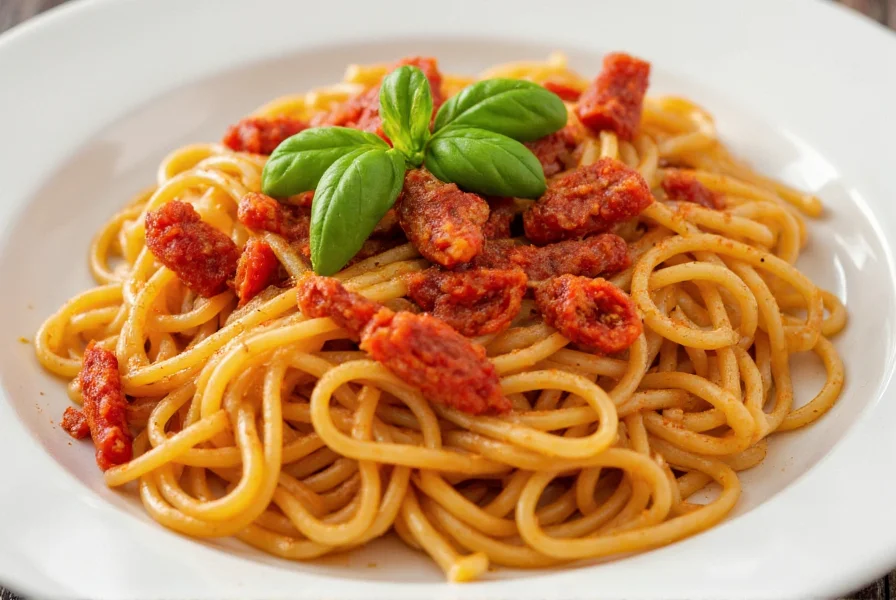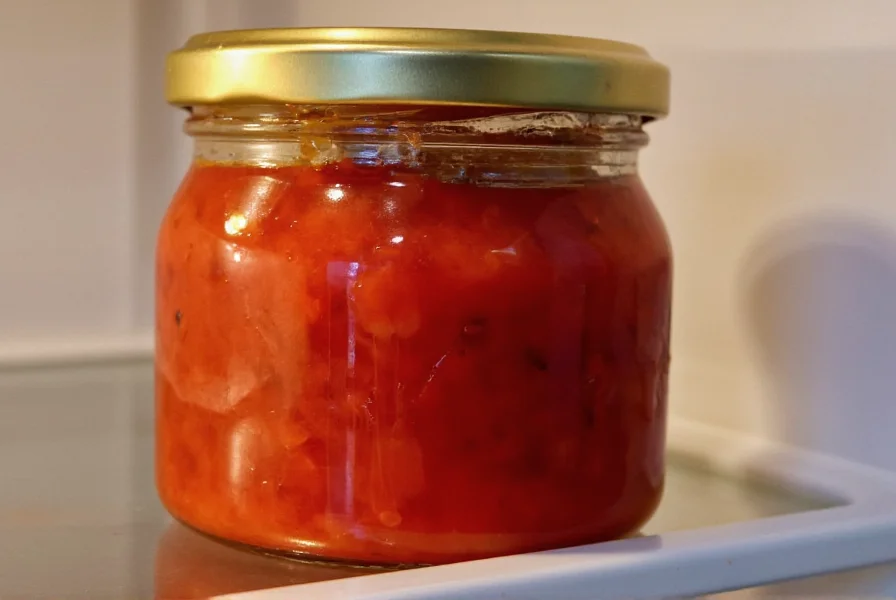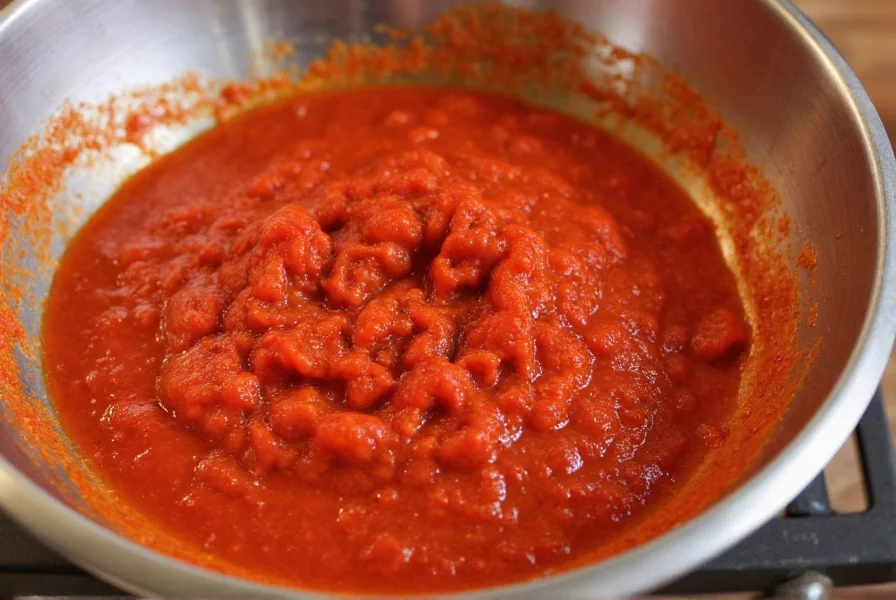Originating from Italy's southern Calabria region, this traditional condiment has gained international popularity for its unique ability to elevate dishes with both heat and depth. The secret lies in the specific peperoncino calabrese peppers grown in Calabria's mineral-rich soil along the Mediterranean coast, which develop complex flavor compounds during slow sun-drying before being ground into paste.
Understanding Calabrian Chili Paste: More Than Just Heat
While many assume chili pastes exist solely to add heat, Calabrian chili paste distinguishes itself through remarkable flavor complexity. The Calabrian pepper (Capsicum annuum) contains natural fruit sugars that caramelize during processing, creating notes of red berry and citrus that balance the heat. This nuanced profile makes it valuable even in dishes where "spicy" isn't the primary goal.
Traditional preparation involves harvesting ripe red peppers in late summer, sun-drying them for several days, then grinding with high-quality olive oil and sea salt. Some artisanal producers add a splash of red wine vinegar for brightness or roasted garlic for depth, but purists maintain the classic three-ingredient formula preserves the pepper's authentic character.
Flavor Profile Comparison: Calabrian Chili Paste vs. Alternatives
| Chili Paste | Heat Level | Primary Flavor Notes | Best Culinary Uses |
|---|---|---|---|
| Calabrian Chili Paste | Moderate (15k-30k SHU) | Fruity, smoky, slightly sweet | Pasta, roasted vegetables, fish, cocktails |
| Harissa | Medium-Hot (10k-25k SHU) | Smoky, garlicky, cumin-forward | Stews, tagines, marinades |
| Gochujang | Moderate (4k-10k SHU) | Sweet, fermented, umami-rich | Stir-fries, bibimbap, glazes |
| Sriracha | Mild-Medium (1k-2.5k SHU) | Vinegary, garlic-forward | Dipping sauces, sandwiches, eggs |
Practical Applications in Modern Cooking
Professional chefs value Calabrian chili paste for its "stealth heat"—it enhances dishes without dominating them. When incorporating into recipes, remember that a little goes a long way. Start with 1/2 teaspoon per serving and adjust to taste, as the heat builds gradually.
For immediate culinary impact, try these applications:
- Breakfast boost: Swirl into scrambled eggs or mix with mayo for avocado toast
- Pasta perfection: Toss with spaghetti, olive oil, and toasted breadcrumbs for spaghetti aglio e olio con peperoncino
- Seafood enhancement: Mix with lemon zest and olive oil as a finishing sauce for grilled fish
- Cocktail creativity: Add a pinch to Bloody Marys or mezcal cocktails for complexity

Authentic Calabrian Chili Paste Substitutes
When authentic Calabrian chili paste isn't available, understanding substitution principles matters more than finding a direct replacement. The goal is replicating both heat level and flavor complexity.
For closest approximation:
- Mix 1 part roasted red pepper paste with 1 part crushed red pepper flakes and 2 parts olive oil
- Add a pinch of smoked paprika for depth
- Include a touch of honey to balance heat (1/4 tsp per tablespoon)
Avoid substituting with single-ingredient options like cayenne powder, which provides heat without the necessary flavor complexity. Harissa makes a reasonable alternative in stews but lacks the bright fruitiness essential to Calabrian cuisine.
Preserving Flavor: Storage Guidelines
Proper storage maintains Calabrian chili paste's vibrant flavor and extends shelf life. Commercially prepared paste typically contains preservatives allowing room-temperature storage before opening. Once opened:
- Refrigerate immediately in an airtight container
- Always use clean utensils to prevent contamination
- Top with a thin layer of olive oil to create a protective barrier
- Consume within 3-4 months for optimal flavor
Homemade versions without preservatives require refrigeration from the start and last approximately 2 months. Freezing in ice cube trays then transferring to freezer bags allows portioned use for up to 6 months.

Identifying Quality Products
When selecting Calabrian chili paste, examine ingredient lists carefully. Authentic products list only:
- Peperoncino peppers (sometimes specified as diavolicchio variety)
- Extra virgin olive oil
- Sea salt
Avoid products with vinegar, garlic, or other ingredients unless specifically seeking a regional variation. The color should be deep ruby-red, not orange or brown, indicating proper pepper ripeness and processing. High-quality paste maintains a slightly coarse texture showing visible pepper flakes rather than a completely smooth puree.
Traditional Calabrian Recipe: Pasta con la Mollica
This simple yet flavorful dish showcases Calabrian chili paste authentically. Serves 2.
- 8 oz spaghetti
- 3 tbsp extra virgin olive oil
- 2 tbsp Calabrian chili paste
- 1 cup toasted breadcrumbs
- Fresh parsley, chopped
- Cook spaghetti until al dente, reserving 1/2 cup pasta water
- Heat olive oil in skillet, add chili paste and cook 1 minute until fragrant
- Add pasta and 1/4 cup reserved water, tossing to emulsify
- Stir in breadcrumbs until pasta is coated
- Serve immediately with additional breadcrumbs and parsley
Frequently Asked Questions
Is Calabrian chili paste extremely spicy?
Calabrian chili paste registers at 15,000-30,000 Scoville Heat Units, placing it in the moderate range—hotter than jalapeños but milder than habaneros. Its heat builds gradually and balances with natural fruit sweetness, making it approachable for most palates when used in recommended quantities (1/2-1 teaspoon per serving).
Can I make Calabrian chili paste at home?
Yes, though authentic Calabrian peppers can be difficult to source outside Italy. Substitute with cayenne or Fresno peppers: roast 10-12 peppers until blistered, remove stems and seeds, then blend with 1/4 cup olive oil and 1 tsp sea salt until slightly coarse. The flavor won't be identical but captures the essential heat and texture.
How does Calabrian chili paste differ from Calabrian chile flakes?
Calabrian chili paste contains oil which extracts and preserves the peppers' volatile flavor compounds, creating a more complex, rounded heat. The paste format distributes flavor evenly throughout dishes, while flakes provide more intense, localized heat. Paste works better in sauces and dressings, while flakes excel as finishing garnishes.
What dishes should I avoid using Calabrian chili paste in?
Avoid using Calabrian chili paste in delicate dishes where its robust flavor would dominate, such as light seafood preparations like sole piccata or subtle desserts. It also doesn't complement strongly sweet applications where the heat would clash rather than enhance.
Does Calabrian chili paste need refrigeration after opening?
Yes, refrigeration is essential after opening to maintain flavor quality and prevent spoilage. Properly stored with a protective olive oil layer in an airtight container, it remains fresh for 3-4 months. Discard if you notice mold, significant darkening, or off odors.











 浙公网安备
33010002000092号
浙公网安备
33010002000092号 浙B2-20120091-4
浙B2-20120091-4